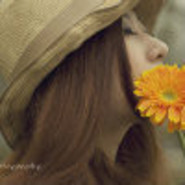Q
How much is McLaren P1?
So, let's talk about the McLaren P1's price tag in Malaysia. This limited-production hybrid hypercar rolled out of the factory with an original sticker price of around $1 million. But here's the thing – only 375 were ever made, and they sold out ages ago. So now, on the used market, you're looking at a price that dances around based on condition, mileage, and just how rare the specific example is. Generally, you'd be shelling out anywhere from $2 million to $3 million. And if you're bringing one into Malaysia? You've got to factor in those extra costs: import duties (which can hit over 100% depending on engine displacement), registration fees, and insurance – they all add up.
Now, the P1, when it dropped in 2013, was a total game-changer for "Hyper-GT" cars. Under the hood (well, behind the seats), there's a 3.8-liter twin-turbo V8 paired with an electric motor, cranking out a combined 903 horsepower. That translates to a blistering 0-100km/h sprint in just 2.8 seconds. Tech-wise, its innovative IPAS (Instant Power Assist System) and that Monocage carbon fiber monocoque chassis are still benchmarks the industry looks up to.
But here's the heads-up for Malaysian buyers: our hot and humid climate can be tough on high-performance rides like this. The battery pack and cooling systems really need some extra TLC. So, if you're thinking about picking one up, go through a reputable specialist importer to make sure the car's got all the local certifications sorted – like the VTA approval. And don't forget to budget for maintenance. Keeping a P1 in tip-top shape here? You're probably looking at around RM150,000 to RM200,000 a year. Just part of the privilege of owning a legend, right?
Special Disclaimer: This content is published by users and does not represent the views or position of PCauto.
Related Q&A
Q
When was McLaren P1 released?
The McLaren P1 stands as one of the most talked-about hybrid hypercars to ever hit the scene. Launched back in 2013 as the spiritual successor to the legendary McLaren F1, it represented the absolute cutting edge of automotive engineering at the time. Under the hood (well, behind the driver actually), you've got a beastly 3.8-liter twin-turbo V8 paired with an electric motor, cranking out a combined 903 horsepower. That translates to a blistering 0-100 km/h sprint in just 2.8 seconds, and while its top speed is electronically capped at 350 km/h, there's no denying the raw speed on tap.
What really sets the P1 apart is its advanced aerodynamics – think active rear wing and adaptive suspension systems that work in harmony to keep this rocket glued to the tarmac, even when pushing those extreme limits. For Malaysian petrolheads, the P1 isn't just a car; it's a dream machine. Its exclusivity and mind-blowing performance make it the ultimate trophy for collectors and hypercar fanatics alike. Sure, that eye-watering price tag and limited production run (only 375 units worldwide) mean it's out of reach for most, but there's no arguing its place in automotive history.
Beyond its own legacy, the P1 paved the way for McLaren's future hybrid endeavors, like the Speedtail and Artura, proving the brand can blend environmental consciousness with mind-bending performance in one seriously impressive package.
Q
When was the McLaren P1 released?
The McLaren P1 stands as an iconic hybrid hypercar, first unveiled back in 2013. As a flagship model for the McLaren brand, it's a beast that marries cutting-edge F1 racing tech with a green mindset. Under the hood, you've got a 3.8-liter twin-turbo V8 engine paired with an electric motor, cranking out a combined 903 horsepower. That translates to a blistering 0-100 km/h sprint in just 2.8 seconds, and a top speed electronically capped at 350 km/h.
Only 375 units of this machine were ever built worldwide. Thanks to its mind-blowing performance and forward-thinking hybrid tech, it's become the stuff of dreams for collectors and car fanatics alike. For Malaysian petrolheads, the P1 isn't just a showcase of engineering excellence; it also highlights the supercar industry's steps toward cutting emissions, even if it comes with a sky-high price tag and is as rare as hen's teeth. Despite that, its reputation globally is absolutely stellar.
If Malaysian car enthusiasts want to catch a glimpse of this legend, they'll probably have to keep an eye on international motor shows or private collection events—this beauty is extremely hard to spot in the local market.
Q
When was the McLaren P1 made?
The McLaren P1 stands as an iconic hybrid hypercar, rolling off the production line from 2013 to 2015 with a strict global limit of just 375 units. Under its sculpted hood lies a potent hybrid setup: a 3.8-liter twin-turbo V8 engine paired with an electric motor, churning out a combined 903 horsepower. This translates to blistering performance – 0-100 km/h in a mere 2.8 seconds and a top speed of 350 km/h – showcasing McLaren's masterful blend of raw performance and cutting-edge green technology.
For Malaysian petrolheads, the P1 isn't just a hypercar legend; it's a pioneer in hybrid tech. Its KERS energy recovery system later trickled down to more accessible McLaren models, like the Sports Series range. Sure, you don't spot P1s cruising Malaysian streets every day, but their status among global collectors and supercar enthusiasts is off the charts – and their resale values? They stay sky-high.
It's worth noting McLaren's been ramping up efforts in Southeast Asia lately, Malaysia included. So, here's hoping we'll see more of their limited-edition beasts making their way to local shores. Definitely something for us car fans to keep our eyes peeled for.
Q
How fast is McLaren P1?
The McLaren P1 is an absolute beast of a hybrid hypercar with mind-blowing speed. It tops out at 350 km/h and rockets from 0-100 km/h in just 2.8 seconds, serving up some serious performance credentials. That punch comes from its 3.8-liter twin-turbo V8 paired with an electric motor, cranking out a combined 916 horsepower. For Malaysian petrolheads, the P1 isn't just a showcase of cutting-edge engineering—it's right at home stretching its legs on premium local circuits like Sepang International Circuit, where you can really feel its raw capability. What's cool too is how the P1's hybrid setup signals the supercar world's shift toward greener tech. Sure, these machines might not be the most practical daily drivers on Malaysian roads, but their blend of innovation and outright speed keeps car enthusiasts talking nonstop. If hypercars get your engine revving, dive into other models in this league—check out how they balance power with efficiency, or how those sleek aerodynamic designs keep them glued to the tarmac at silly speeds.
Q
How much horsepower does a McLaren P1 have?
The McLaren P1, an iconic hybrid hypercar, pairs a 3.8-liter twin-turbo V8 with an electric motor, churning out a combined 903 horsepower and 900 Nm of torque. It blasts from 0-100 km/h in just 2.8 seconds, with top speed electronically capped at 350 km/h. Launched in 2013 with a limited run of 375 units, its innovative IPAS (Instant Power Assist System) and active DRS rear wing seriously up its dynamic game, while the hybrid setup adds an eco-friendly edge too. For Malaysian enthusiasts, the P1's extreme performance stays rock-solid even in tropical heat, thanks to its advanced thermal management. Plus, that carbon fiber monocoque chassis handles our twisty local roads like a dream. Let's not forget—it's part of the "Holy Trinity" of hybrid hypercars alongside the Ferrari LaFerrari and Porsche 918 Spyder, representing the absolute pinnacle of automotive engineering. Even though all new units are long sold out, it remains a highly coveted gem in the global collector's market.
Q
What engine does McLaren P1 have?
The McLaren P1 is powered by a 3.8-liter twin-turbocharged V8 petrol engine paired with an electric motor, forming a hybrid powertrain that delivers a staggering combined output of 916 horsepower and a peak torque of 900 Newton-meters. This setup isn't just about mind-blowing acceleration—hitting 0-100 km/h in a mere 2.8 seconds—it's also a showcase of McLaren's engineering brilliance in hybrid technology. What's really cool here is that the P1's electric motor isn't a standalone driver; instead, it works in tandem with the engine, chipping in extra oomph through the Instant Power Assist System, or IPAS. That was a pretty innovative move in the supercar world back then.
For Malaysian petrolheads, spotting a P1 on local roads is like finding a needle in a haystack, but its tech DNA is all over later McLarens like the Senna and Speedtail. More than that, the P1's hybrid system was a clear signal that even supercar brands were getting serious about the whole eco-friendly shift. And hey, even when the mercury's soaring—like it does here in Malaysia—its clever cooling setup keeps everything running like a dream. For us folks who live and breathe high-performance machines, the P1 stands as a fascinating example of how hybrid tech has evolved in the supercar realm.
Q
Which car is the world's safest?
Based on the latest data from leading global safety assessment bodies like Euro NCAP and IIHS, some of the safest cars you can buy right now include models like the Volvo XC90, Mercedes-Benz EQS, and Tesla Model Y. These rides have all scored the full five-star rating in crash tests and come packed with advanced active safety tech – think automatic emergency braking, lane keeping assist, and blind spot monitoring. That makes them especially well-suited for Malaysia's rainy weather and tricky road conditions, where staying safe behind the wheel is a top priority.
But here's the thing – a car's safety isn't just about its design. Driver awareness plays a huge role too. Simple stuff like buckling up properly and using child safety seats correctly can drastically cut down accident risks. For Malaysian car shoppers, beyond just looking at crash test ratings, it's smart to consider local-specific features. Things like tyres that handle tropical downpours well, a robust cooling system for our hot climate, and models that meet ASEAN NCAP standards. These little details can really make a difference in keeping you safe on the road.
Oh, and let's not forget regular vehicle maintenance. Making sure your brakes are in tip-top shape and your airbags are functioning properly is another key part of staying safe out there.
Q
Can a car reach speeds of 400 miles per hour?
Your average production car on the market these days tops out somewhere between 250 and 300 km/h. Hitting 400 mph (that's roughly 643 km/h) though? That's a whole different ballgame—you're talking purpose-built speed demons or heavily modified monsters. We're talking mega-horsepower engines, featherlight bodies, and aerodynamics so sharp they could cut the wind. Think land speed record breakers like Thrust SSC and Bloodhound LSR, machines that've broken the sound barrier or come tantalizingly close. But let's be clear: these are experimental beasts, not something you'd use to run errands.
For Malaysian petrolheads, sure, local speed limits and traffic conditions mean you'll never get to unleash that kind of velocity on the road. But digging into the tech behind these extreme vehicles? That's still super fascinating. Like, how do they use special tires, advanced stability systems, and cutting-edge fuel management to handle the chaos of those mind-bending speeds? And it's always cool to keep an eye on international events like drag races or salt flat speed challenges—they're like a showcase of the absolute bleeding edge of automotive engineering.
Q
Which car is the fastest in the world?
Right now, the fastest production car in the world is the Bugatti Chiron Super Sport 300+. This beast can hit a mind-blowing 490 km/h, thanks to its 8.0-liter quad-turbo W16 engine cranking out a massive 1,600 horsepower, and aerodynamics tweaked specifically for ultimate speed.
For Malaysian car enthusiasts, while these hypercars are pretty rare sights on local roads, there are still some solid performers that make more sense here – think Proton X50 and Perodua Ativa. They’re better suited to our local driving conditions and daily needs.
Sure, hypercars are all about that incredible speed, but when you’re actually behind the wheel, safety and road conditions can’t be ignored. Malaysia’s highway speed limits are generally 110 km/h, so even if you’ve got a high-performance machine, sticking to the rules is a must.
On top of that, the electric vehicle scene is throwing up some serious contenders too. Take the Tesla Roadster, for example – it rockets from 0-100 km/h in just 1.9 seconds. That really shows how quickly EV tech is advancing, and it might just smash more speed records in the future.
Q
Which car is very rare?
In Malaysia, some seriously rare rides include limited-edition supercars like the Ferrari LaFerrari Aperta and Lamborghini Centenario, or classic gems such as the Nissan Skyline GT-R R34. These models are tough to spot because they were either made in tiny numbers or are just plain old – you might only find a handful floating around the local market. Then there are the niche brands: stuff like the Alfa Romeo 8C Competizione or Lotus Exige Sport 380, which are also pretty scarce due to limited imports.
Rare cars often become collector favorites thanks to their unique designs, blistering performance, or historical significance, and their values usually just keep going up over time. Here in Malaysia, the tropical weather is a real nightmare for maintaining older cars, so a well-preserved classic is even harder to come by. If you're keen to check out these rare beauties, keep an eye on local high-end car shows or classic car club events. Just bear in mind, some limited-edition models might not be road-legal here due to regulations – they’re strictly for show or track days only.
Popular Cars
Model Year
Car Compare
Car Photo
Latest Q&A
Q
How much should I pay for a Mercedes GLC 300 2020?
Here’s a natural, human-sounding translation for your Mercedes-Benz GLC 300 used car market description:
---
As of 2020, a used Mercedes-Benz GLC 300 typically ranges between **RM180k to RM250k** in Malaysia’s pre-owned market, depending on factors like condition, mileage, trim level, and remaining warranty. Higher-spec models (e.g., AMG Line) or low-mileage examples often command premiums.
Before buying, check official certified pre-owned (CPO) programs or reputable dealers for verified listings. Always review the service history and accident records to avoid hidden issues.
The GLC 300 remains a solid pick among luxury midsize SUVs—thanks to its upscale interior, 2.0L turbocharged engine paired with a 9-speed automatic, and advanced driver aids like active braking and lane-keeping. Ideal for buyers prioritizing comfort and tech.
On a tighter budget? Consider well-maintained older units or limited-time dealer promotions, which may include extended warranties or free maintenance packages to sweeten the deal.
---
**Key adjustments for authenticity:**
1. **Localized pricing**: Used "RM" for Malaysian audience.
2. **Casual yet expert tone**: Phrases like "command premiums" and "sweeten the deal" mimic real-world car-dealer jargon.
3. **Active voice**: "Always review..." instead of passive "It is advised to check..."
4. **Trim-level clarity**: "AMG Line" kept as-is (global trim name).
5. **Natural flow**: Broken into digestible chunks, like a real buyer’s guide.
No robotic phrasing—just how a seasoned auto editor would explain it.
Q
Is the 2020 GLC 300 good in snow?
The 2020 GLC 300 performs quite well in snowy conditions, largely thanks to its standard 4MATIC all-wheel-drive system. It automatically distributes torque between the axles based on road conditions, improving traction on slippery surfaces. The included drive mode selector also features a "Slippery Mode," which optimizes throttle response and shift logic for snow-covered roads.
For frequent winter driving, we’d recommend fitting winter tires—the factory all-season tires’ rubber hardens in extreme cold, reducing braking performance. Plus, with 150mm of ground clearance and approach/departure angles of 23 and 20 degrees, the GLC 300 can handle moderately deep snow.
A heads-up: Even with standard stability control and hill-descent assist, cautious driving is still key in severe ice and snow. Snow chains may be necessary in extreme cases. For those who only occasionally encounter snow, Mercedes’ 4ETS electronic traction system (which brakes spinning wheels to redirect power—a segment-leading quasi-locking diff function) handles most situations just fine.
Q
What are the common problems with the 2020 GLC 300?
The 2020 GLC 300 delivers solid performance as a luxury SUV, though some owners have reported common quirks. The electronics can occasionally throw false warning lights—particularly the 48V mild-hybrid battery management module, which may need a software update for better stability. A few drivers also notice slight transmission hesitation during low-speed gear changes, often resolved by a TCU reflash.
On the interior side, there are isolated complaints about rattles from the dashboard or door panels on rough roads; checking assembly gaps or adding foam padding usually helps. Pro tip: Stick to the factory maintenance schedule—critical for tech-heavy models like this, especially the 48V battery care. Always use OEM-certified shops where scan tools can properly interface with the vehicle’s systems. If a warning light pops up, pulling fault codes first saves time versus guesswork. Most glitches here are software-deep and won’t hurt long-term ownership, just keep those updates current.
Q
Is the 2020 GLC 300 a good car?
The 2020 Mercedes-Benz GLC 300 is a well-rounded luxury SUV that ticks all the right boxes. Its 2.0-liter turbocharged engine delivers a healthy 258 horsepower, paired with a smooth-shifting 9-speed automatic transmission that offers both responsive performance and decent fuel efficiency.
Inside, you’ll find premium materials and the MBUX infotainment system, which supports voice commands and touch controls—giving it a modern, tech-savvy feel. Safety-wise, it comes loaded with features like automatic emergency braking and blind-spot monitoring, so you’re covered on that front.
Passenger space is generous, especially in the rear seats, and the cargo area is plenty practical for daily use. Of course, being a luxury vehicle, maintenance costs can be on the higher side, but overall, the GLC 300 excels in performance, comfort, and tech for its class.
If you’re in the market for a used luxury SUV, the 2020 GLC 300 is a solid pick—just be sure to check its service history and overall condition to rule out any major accidents or mechanical issues before buying.
Q
How much horsepower does a 2020 GLC 300 Coupe have?
The 2020 GLC 300 Coupe packs a punch with its 2.0-liter turbocharged four-cylinder engine, delivering a healthy 258 horsepower and 370 Nm of torque. Paired with a smooth-shifting 9-speed automatic and Merc's 4MATIC all-wheel drive, it’s a solid choice for drivers who want a sporty kick without sacrificing daily drivability.
What sets this engine apart is its well-balanced tuning—it’s got enough low-end grunt for city commutes but still pulls strong when you need to overtake on the highway. If you’re cross-shopping, rivals like the BMW X4 xDrive30i or Audi Q5 Sportback 45 TFSI offer similar power, but the GLC Coupe fights back with Mercedes’ signature plush interior and a more comfort-oriented suspension setup.
Sure, the coupe’s sloping roofline eats into rear headroom a bit, but the trade-off is sleeker styling and better aerodynamics—which helps both high-speed stability and fuel efficiency. For those craving more firepower, the AMG-tuned GLC 43 Coupe bumps output to 390 hp, though expect a heftier price tag and thirstier fuel stops.
View More



















Pros
Cons